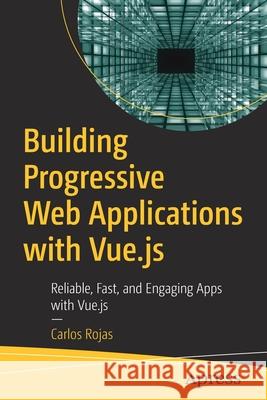Building Progressive Web Applications with Vue.Js: Reliable, Fast, and Engaging Apps with Vue.Js » książka
topmenu
Building Progressive Web Applications with Vue.Js: Reliable, Fast, and Engaging Apps with Vue.Js
ISBN-13: 9781484253335 / Angielski / Miękka / 2019 / 233 str.
Kategorie:
Kategorie BISAC:
Wydawca:
Apress
Język:
Angielski
ISBN-13:
9781484253335
Rok wydania:
2019
Dostępne języki:
Ilość stron:
233
Waga:
0.36 kg
Wymiary:
23.39 x 15.6 x 1.35
Oprawa:
Miękka
Dodatkowe informacje:
Wydanie ilustrowane











